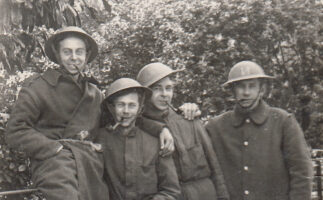Support Hidden Compass
We stand for journalism, science, history, and hope. Make a contribution to Hidden Compass and stand with us.
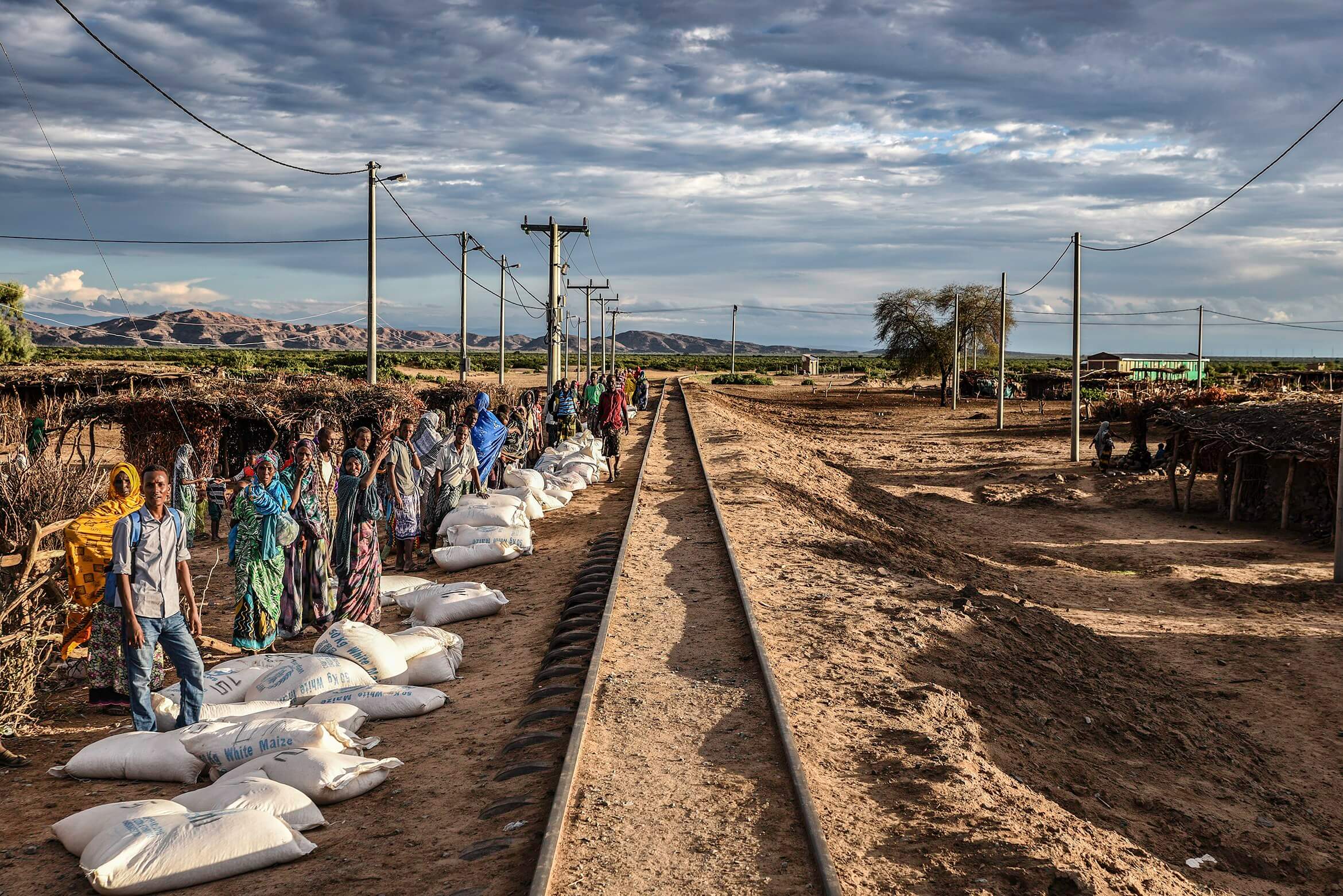
Along the tracks, people wait for the Negus train. For more than one hundred years, the train, officially the Ethio-Djibouti Railway, has carried passengers, many of them merchants, through the desert from Ethiopia to Djibouti. Now the train is in its final days. PHOTO: EMILIENNE MALFATTO.
Dozens of people rushed around me on the dusty train platform before dawn. Female Somali merchants appeared out of the darkness like ghosts, their colorful veils long and fluttering around them. I watched as they tossed their bulging bags of grain inside before disappearing into the seven cars of Ethiopia’s legendary Negus train.
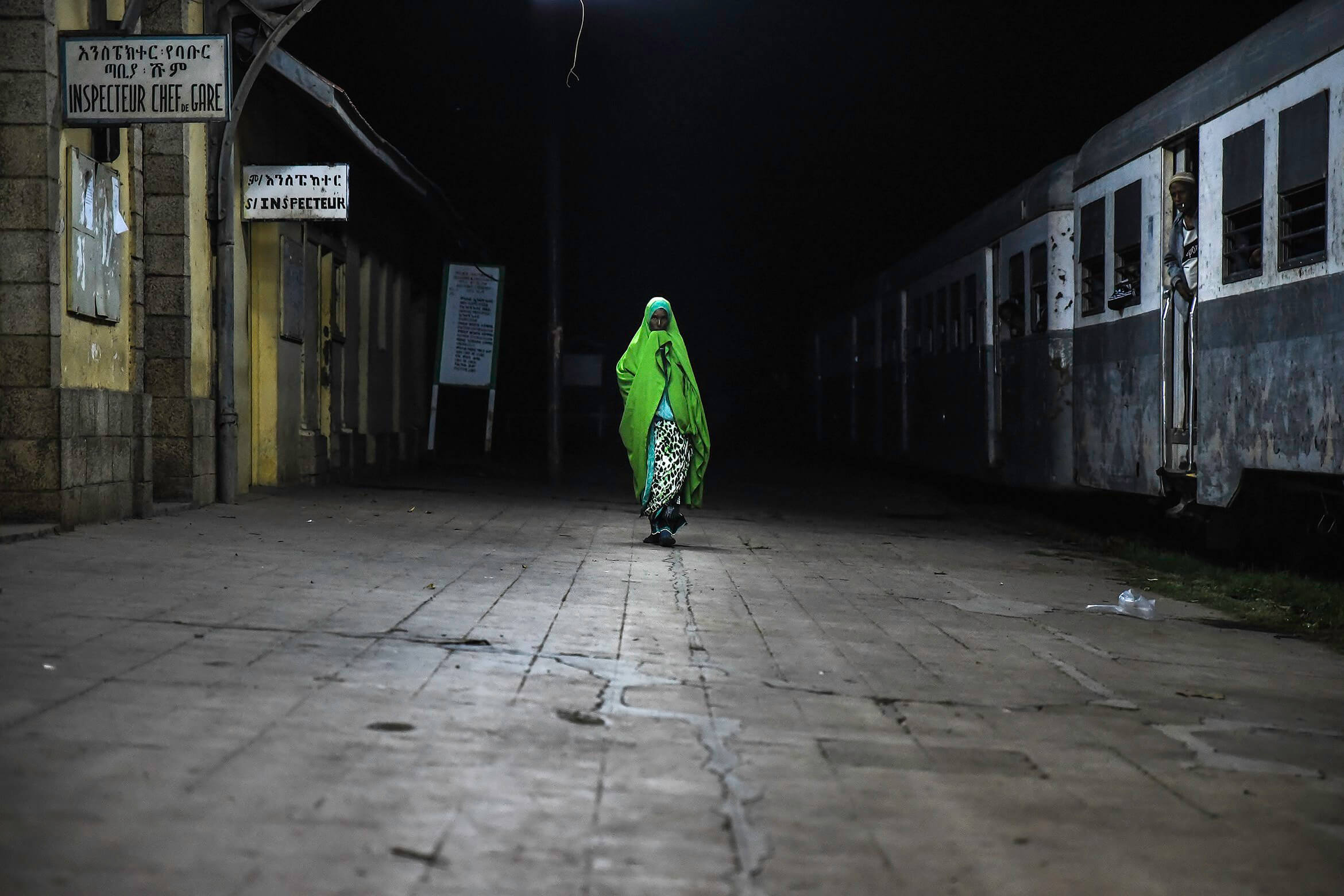
A woman emerges from the pre-dawn darkness at the station in Dire Dawa, Ethiopia as the Negus train waits on the tracks. PHOTO: EMILIENNE MALFATTO.
Named after the title of the Ethiopian sovereign, the Negus train, officially known as the Ethio-Djibouti Railway, was built a century ago. Spanning some 500 miles from the East African Plateau to the Red Sea, it once connected Ethiopia’s capital city, Addis Ababa, to Djibouti.
It was a shorter, local version of the Orient Express, replete with smugglers and brigands. During the Ogaden War between Ethiopia and Somalia in the 1970s, the railway traversed a conflict zone and was bombed several times. To outsiders, it was a symbol of luxury, adventure, and, at times, danger, but to residents of the connected communities, it was sustenance — an economic boon that allowed them to transport goods between centers of commerce.

Passengers spill from the train at Dewelé, one of the train’s many stops in the desert. PHOTO: EMILIENNE MALFATTO.
The train I boarded, however, was living on its past glory. Pockmarked and worn, it was running only from Dire Dawa to Djibouti — a fraction of the original route — and I was there to document its last days. In October 2016, Ethiopia inaugurated a new electric railway, once again connecting Addis Ababa to Djibouti. Built and financed by China as part of its “Chinafrica” policy to increase its share of trade and to invest heavily in the infrastructure of African nations, the new train is everything the legend no longer is: fast, modern, efficient. Any day now, if it has not already, it will sound the death knell for the Negus train. But that didn’t dampen the thrill I felt when the whistle sounded just before 4 a.m. This train ride was not merely a slow trip through the desert. It was a journey into the past on a train with a vanishing future.

Passengers peer out the open windows as they wait to depart Dire Dawa. The train’s textured exterior is a testament to its life. PHOTO: EMILIENNE MALFATTO.
“There is no way I’m getting into the Chinese train.”
The mumbling voice belonged to an older man. The fate of the Negus train was not lost on the passengers I met. Whether with anger, sadness, or nostalgia, nearly everyone I spoke to mentioned the future of the line.
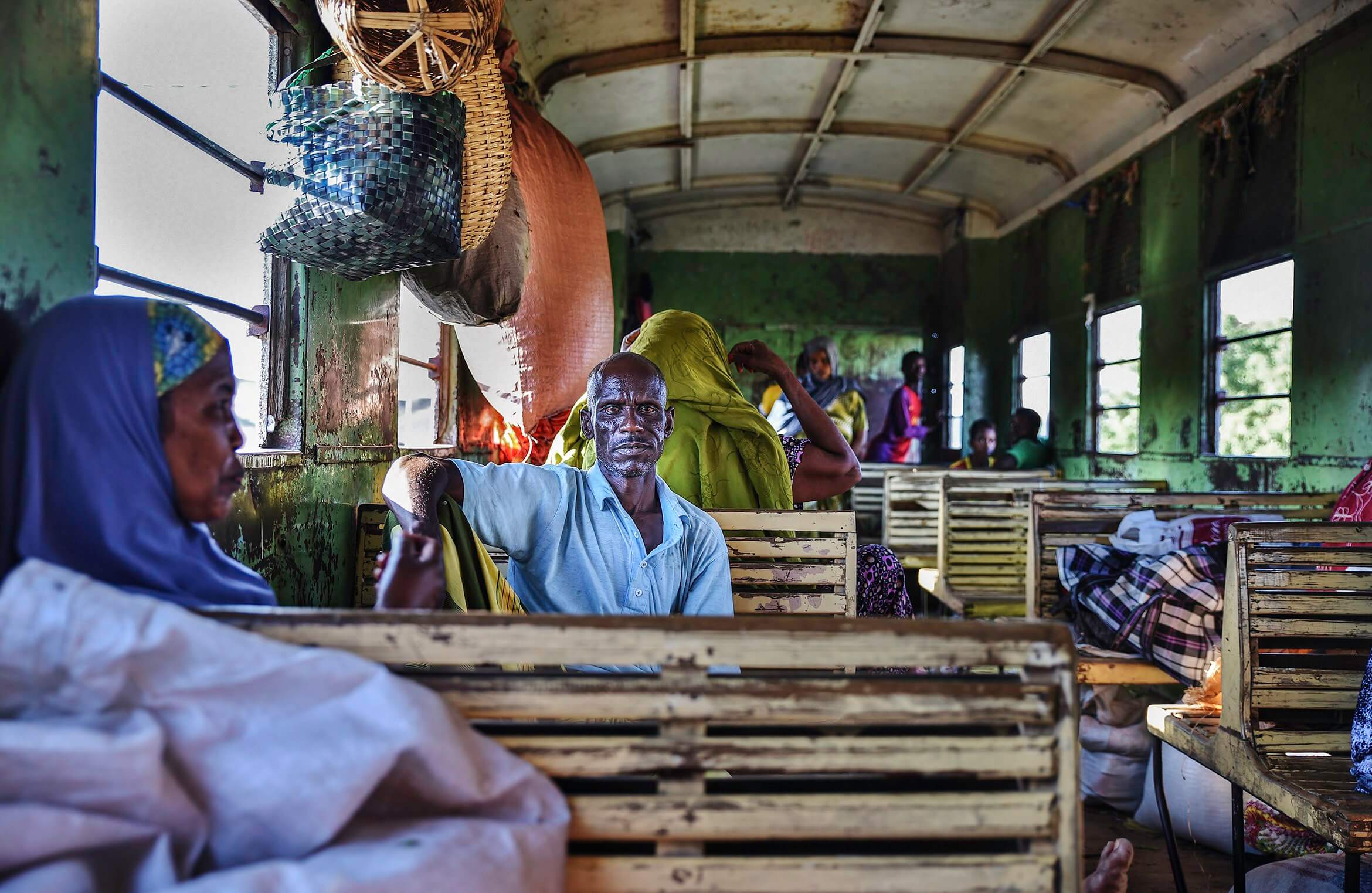
A passenger sits aboard the Negus train near the Djibouti border. Above him, hang baskets and sacks of goods. PHOTO: EMILIENNE MALFATTO.
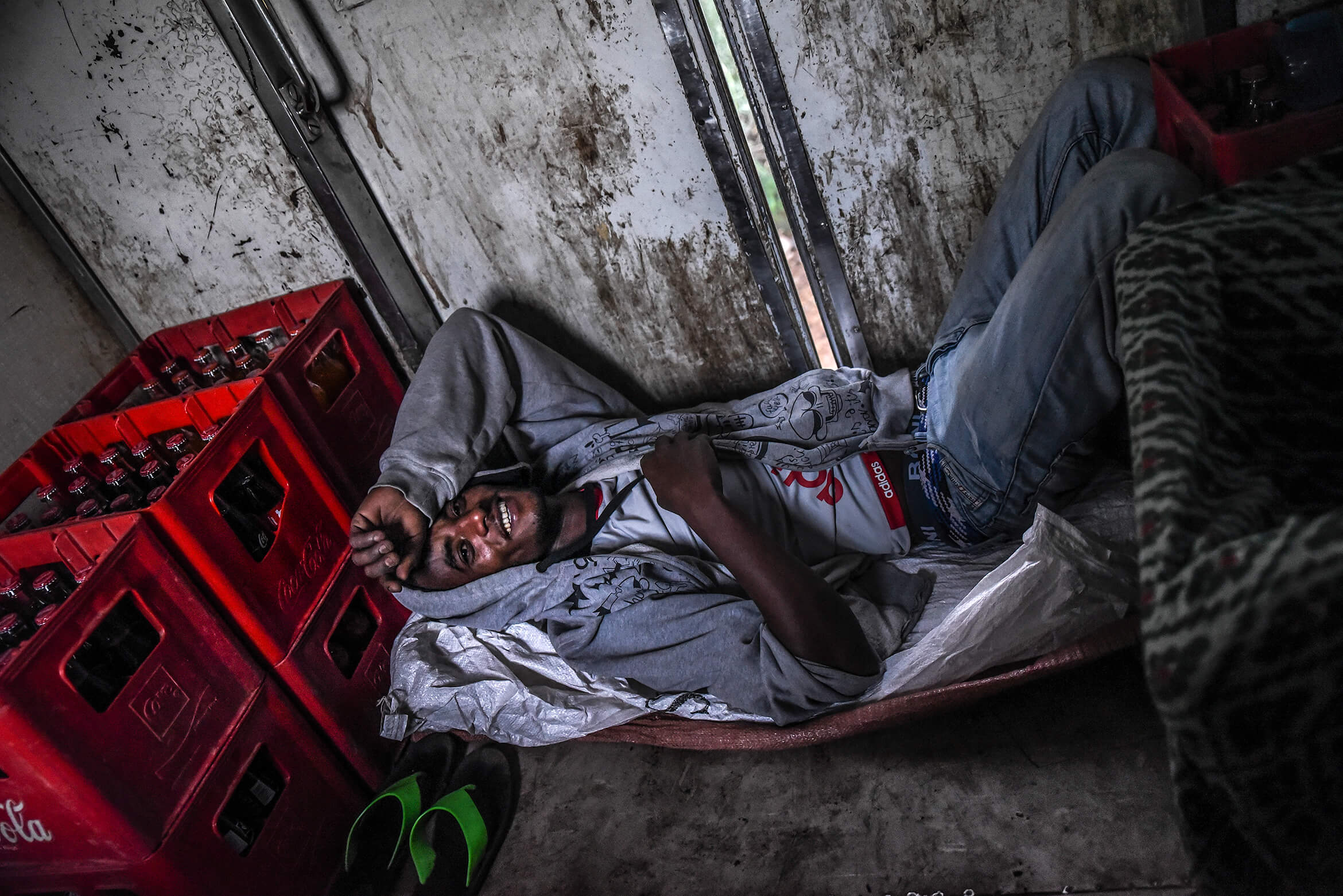
A passenger rests on the floor of the train alongside crates of Coca-Cola bottles that will be sold and consumed during the long journey. PHOTO: EMILIENNE MALFATTO.
For 12 hours, we traveled through the desert, passing villages that had developed alongside the tracks over the years, the light scents of grain, sweat, and well-worn wood mixing with the desert.

A woman gazes out of the window as the train makes its way across the desert. What was once a 500-mile journey is now roughly half as long. PHOTO: EMILIENNE MALFATTO.
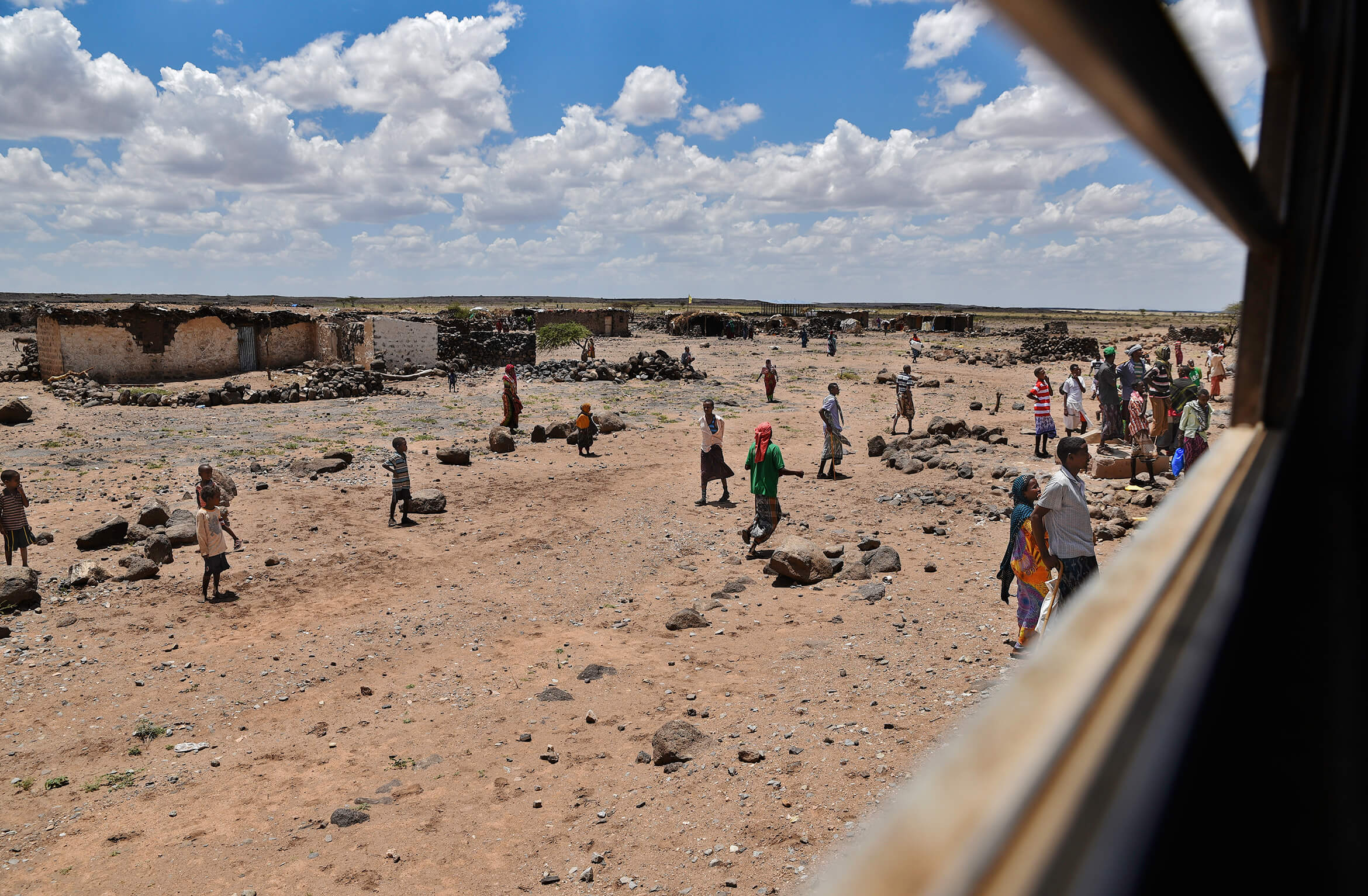
As the afternoon sun beats down, the train passes one of many villages that depend upon it for survival. PHOTO: EMILIENNE MALFATTO.
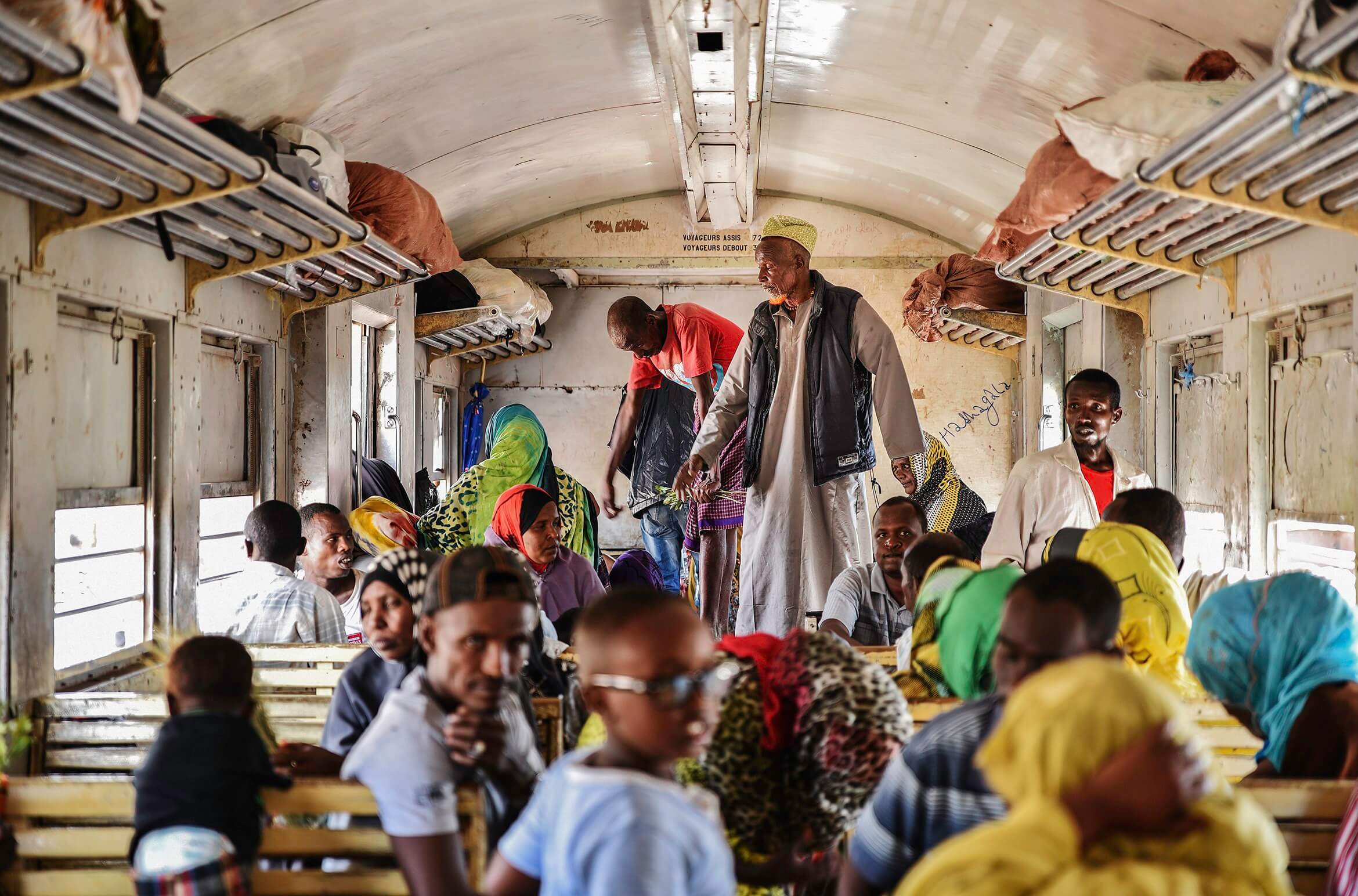
The bustle does not die down when the Negus train starts moving. Passengers interact and conduct business as they head toward Djibouti PHOTO: EMILIENNE MALFATTO.
The majority of the passengers were Somali, living between Ethiopia, Djibouti, and Somaliland. Idriss, a smiling, joking Djiboutian man in his mid-forties, was a regular commuter who was full of anecdotes:
“One day,” he said in a light tone, “there was a scorpion in the wagon, and it got into my shoe.”
I looked at the floor suspiciously. There were no scorpions that I could see, but the floor was covered with battered luggage, crates of Coca-Cola, and overstuffed sacks, still bearing the stamps of United Nations agencies, filled with grain and khat.
…the new train is everything the legend no longer is: fast, modern, efficient. Any day now, if has not already, it will sound the death knell for the Negus train.
Some refer to this as the “khat train,” and though they do not always mean it kindly, they are not altogether wrong.
“Its majesty, Khat,” joked Idriss about the leafy green stimulant.
Most Western countries consider khat to be an illegal drug, but in the African Horn and in Yemen, it is an important part of everyday life. Dire Dawa’s khat is sought after for its quality and its low cost. In the train car, bags of khat were like bags of gold.

During a stop, men buy and sell khat through the train’s windows. The plant is a stimulant and is considered illegal in most western nations, but in parts of Africa and the Middle East, it is an important part of everyday life. PHOTO: EMILIENNE MALFATTO.
After lunch — plastic bags of pasta that we ate with our hands — I watched as Idriss relaxed and stretched out, sitting more comfortably as he prepared “to khat” (because khat is also a verb). This was his midday routine: Khat and then nap. He handed me a few of the juicy, little leaves. I put them in my mouth and began to chew, tasting the bitter oils that emerged. I didn’t chew the khat for long and when we arrived at the Djiboutian border — at another village that seemed to live by and for the railway — I didn’t buy any.
Instead, I looked around and wondered. Would this place survive when the Negus train stopped running? The train was a lifeline in the desert. Could the towns and villages we had passed along the way live without it?
Most of the passengers exited the train and got into buses or taxis to continue their journeys, but I stayed. The Negus train had reached the end of the tracks and so had I.
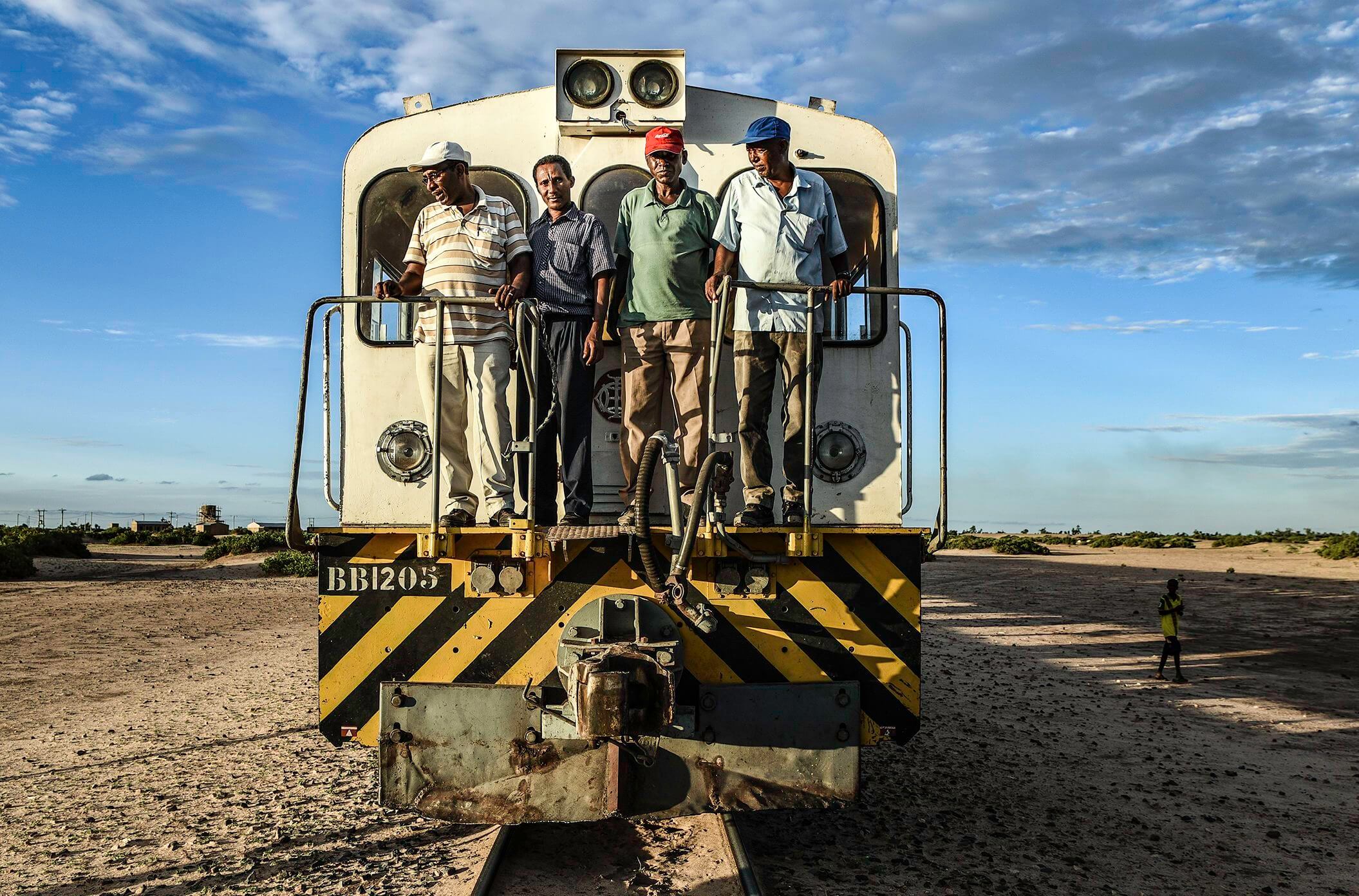
The end of the tracks. The train’s engineers and conductors gather on the caboose at sunset. PHOTO: EMILIENNE MALFATTO.
Emilienne Malfatto
Emilienne Malfatto is an award-winning photojournalist covering post-conflict and social issues, mostly in Iraq.
Never miss a story
Subscribe for new issue alerts.
By submitting this form, you consent to receive updates from Hidden Compass regarding new issues and other ongoing promotions such as workshop opportunities. Please refer to our Privacy Policy for more information.



